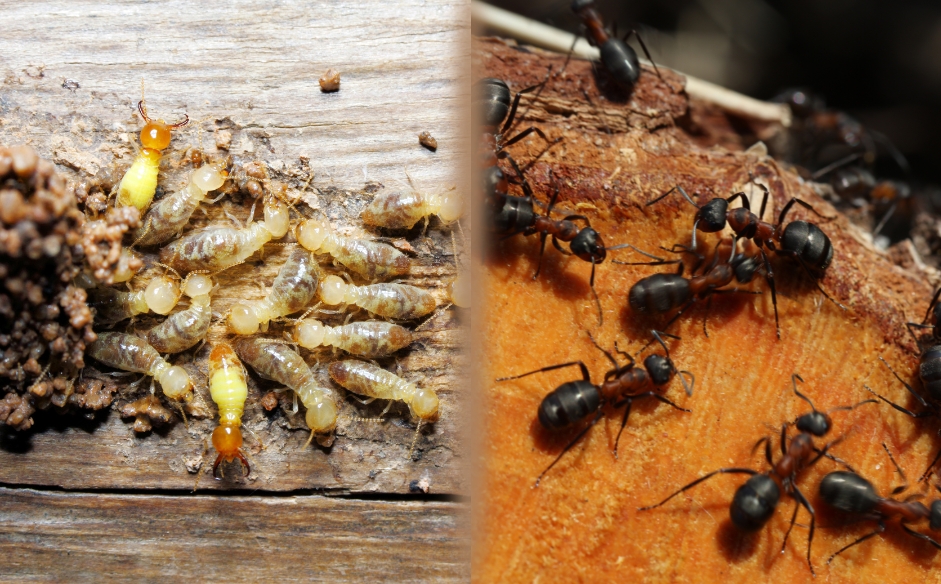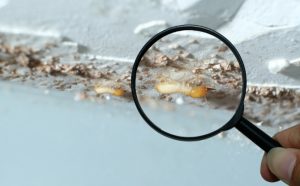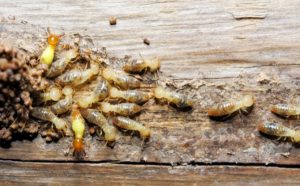When it comes to pests that can cause significant damage to your home, carpenter ants and termites are two of the top culprits. Both species have a reputation for destroying wood structures, which makes them a major threat to homeowners.
However, despite their similar destructive tendencies, there are significant differences between these two insects, which makes it important to know which one is causing the damage in your home.
Today, we will take a look at the main differences between carpenter ants and termites, so you can identify which pest is responsible for destroying your home.
Appearance
One of the most notable differences between carpenter ants and termites is their appearance. Carpenter ants are typically larger than termites, reaching about half an inch in length compared to termites’ small quarter-inch size.
Additionally, carpenter ants have three distinct body segments with elbowed antennae, while termites have straight antennae and a more cylindrical body shape.
Behaviour
Another key difference between carpenter ants and termites is their behaviour. As their names suggest, carpenter ants are known for carving out tunnels in wood to create nests.
However, they do not actually eat the wood like termites do. Instead, carpenter ants use the wood as a nesting site and discard the chewed-up wood particles outside of their nest.
On the other hand, termites consume wood as their primary food source and are known for causing significant damage to wooden structures. They have a complex social structure and work together to build elaborate tunnels and chambers within their nest.
Both carpenter ants and termites can be considered pests when they invade human living spaces, but their behaviours differ in terms of the extent of damage they cause.
Life Cycle
Carpenter ants and termites also have different life cycles. Carpenter ants go through a complete metamorphosis, which includes four stages: egg, larvae, pupae, and adult. The eggs are laid by the queen ant and hatch into white, legless larvae that are fed by worker ants. The larvae then pupate before emerging as adults.
Termites also go through a complete metamorphosis, but their life cycle is slightly different. The queen termite lays eggs, and these hatch into nymphs, which resemble smaller versions of the adult termites. These nymphs go through several moults before reaching adulthood.
Habitat
Carpenter ants prefer to live in damp or decaying wood, such as trees or old furniture. They do not actually eat the wood like termites do, but they excavate it to create nesting areas.
Termites, on the other hand, require a constant source of moisture and live in underground colonies connected by mud tunnels. They feed on wood and other cellulose materials.
Damage
As mentioned earlier, carpenter ants do not eat wood, but they do cause damage by excavating it to create their nests. This can weaken the structure of a building and lead to costly repairs.
Termites, on the other hand, are infamous for their ability to cause significant damage to wooden structures. They feed on wood 24/7 and can quickly destroy a home’s foundation if left unchecked.
Prevention
To prevent carpenter ants from entering your home, it is important to eliminate sources of moisture, such as leaky pipes or clogged gutters. It is also important to seal any cracks or openings that could serve as entry points for these pests.
Termite prevention involves eliminating moisture sources and keeping firewood and other wooden materials away from the foundation of your home. Regularly inspecting and treating wooden structures can also help prevent termite infestations.
Treatment
If a carpenter ant infestation is discovered, it is important to contact a professional pest control service for treatment options. This may include using baits or insecticides to eliminate the ants at their source.
Termite treatment typically involves the use of specialised chemicals that target these pests specifically. In severe cases, fumigation may be necessary to completely eradicate the termites from your home.
Takeaway
In conclusion, both carpenter ants and termites are destructive pests that can cause significant damage to our homes. It is important to take preventive measures to protect our homes from these pests, such as eliminating potential food and water sources and regularly inspecting for signs of infestations.
If an infestation is suspected, it is best to consult a professional pest control service for proper identification and treatment. Do not attempt to handle an infestation on your own, as this may lead to further damage and spread of the pests.




